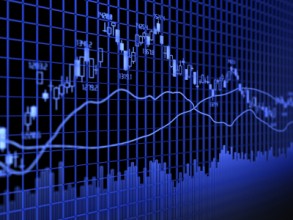Volatility can be a factor in equities markets, but is far more prevalent and therefore important when trading commodities or currencies. By understanding the benefits and pitfalls associated with a volatility increase traders can both accentuate and maximise profits, and simultaneously manage and minimise risk. 
Levels of expected volatility vary from currency to currency, and commodity to commodity, understanding these different volatilities will give you a better sense of how to calculate appropriate stop-less levels and realistic profit targets for individual trades.
It isn’t uncommon for a trade to fall into a loss before recovering into profit again. But just how deep should you allow yourself to get into a losing position before cutting your losses and bailing out? Without an appreciation of volatility you could accrue huge losses because the volatility isn’t there to get back to your original position. Alternatively placing a stop-loss too close to your opening position in a trend trade may mean you lose rather than profit because trades rarely rise continuously, and this may cause you to get closed out too soon.
The Average True Range indicator (ATR), developed J Welles Wilder, as an accurate calculator of market volatility. The ATR is a moving average of the True Range (TR), which calculates the movement of a price bar, over the period of time that can be set to the tastes of individual traders.
There is a historical difference between different commodities and currencies, as well as fundamental market analysis factors which increase or decrease volatility at a specific time. For example, when comparing the ATR of EURGBP with EURJPY, with all factors equal it is clear that EURJPY is far more volatile. When observing the commodities markets, it is immediately apparent that oil is incredibly volatility when compared to similar commodities, with shifts regularly moving more than 50 points per hour.
There are various different ways the ATR can be utilised, Wilder used daily charts with 7 or 14 day periods. This would give a trader a daily average price movement over the course of a week or two weeks.
Daily, hourly or another ATR can all be important tools in calculating stop-losses and profit targets, depending on each individual trader’s strategy and strengths. The ATR does not give any indication of direction or trend, it therefore needs to be combined with other technical analysis tools to be of practical use to traders.
Another useful tool in harnessing the power of volatility, particularly in trending markets, is the Alligator Signal.
The Alligator Signal is comprised on three exponential moving averages (EMAs); five period, eight period and thirteen period EMA, coloured green, red and blue respectively.
As the price moves quickly each line will react: the green line will react the fastest because it will be most affected by the current price. The current price affects the thirteen day period EMA least, making the blue line the slowest to react. By observing how the three lines differentiate from each other traders can get a better sense of how the market is reacting at a given time. The order of the lines will determine whether the market is in an uptrend or downtrend, and distance between the lines will determine how volatile the market shift is. You can therefore use this information to set the appropriate stop-loss and profit target to avoid getting closed out of a trend too soon or too late.
The larger the timeframe you wish to trade a position or the more volatile the pair then the wider your stop-loss value should be. However, if you combine your knowledge of volatility with a correctly calculated risk-reward ratio you’ll be set to maximise your profits in volatile markets.
Read More:
what are ict concepts in trading?
how to avoid revenge trading forex factory?
Tradersdna is a leading digital and social media platform for traders and investors. Tradersdna offers premiere resources for trading and investing education, digital resources for personal finance, market analysis and free trading guides. More about TradersDNA Features: What Does It Take to Become an Aggressive Trader? | Everything You Need to Know About White Label Trading Software | Advantages of Automated Forex Trading









